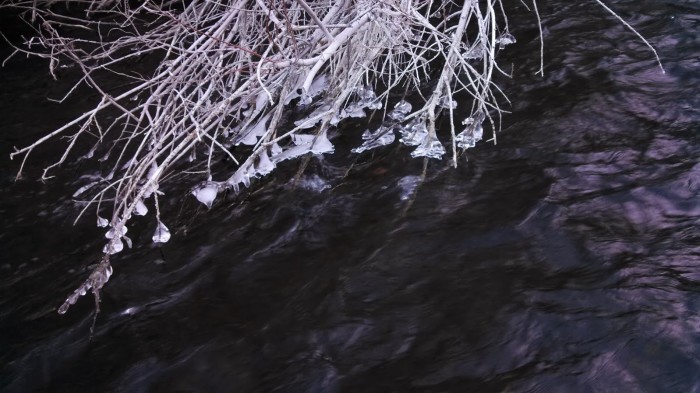
I go fishing in the winter. Not a lot, but I do go. And I tie flies. And I spend my winter on dozens of other activities, most of which I do not enjoy. From a fishing perspective, I think winter is mostly about survival. How can I feed my habit enough to keep me alive? Hence, I end up in a river trying to cast while ice suffocates my guides. Or I find myself tying ant patterns in February while the temperature in West Yellowstone (a place one might reasonably travel to if one wanted to fish ant patterns) is 47 degrees below zero.
While these activities are fun, they also appeal to the angling psyche. They present the subconscious mind with evidence that winter is only a temporary condition. They let me know that someday soon this snow will be water filled with swimming trout and on that someday I can wear flip flops outside without fear of losing my pinky toe to frostbite.
Another such activity is monitoring the snowpack and guessing at how all that snow will weave in with a half dozen (at least) other variables to make up the spring, summer, and fall seasons. I’ve found myself doing this lately as a nice late winter storm hit Eastern Idaho. Down here in the valley (read that in your best Bruce Springsteen voice), we’ve had a mild winter by all accounts. At some point in mid January the air temps broke freezing and most of the ground snow melted. Because Eastern Idaho has an agricultural economy, this event prompted much hand wringing and nervous sweat. Then, last week, we got a nice wet winter storm that made driving unpredictable and placated the doomsayers temporarily.
I tend to watch the snowpack numbers for the Henry’s Fork and South Fork of the Snake. These are my home rivers, so to speak, and the fishing in both rivers can hinge on how much of the frozen stuff is resting on the surrounding peaks. Both rivers have dams, which adds a layer of complexity to things (and changes the fishing). The Henry’s Fork, of course, is widely-known as a giant spring creek. Which is true albeit perhaps an oversimplification. The lower river can be especially impacted by snowmelt and the upper river is not immune either–flows from Island Park dam are impacted by the amount of water available in the region, and flows from Island Park are one of the key factors to healthy fish populations in the river’s most famous reaches.
This year both rivers are in decent shape as far snowpack goes, but then that is not the only factor. Right now most of the lakes are nearly empty, because last year’s snow was poor. And we are heading into the crucial spring season that can make or break a snow year (and a farming year) with a couple of weeks or exceedingly wet or exceedingly warm weather.
I’ve found over the years that the short term fishing can be good no matter what happens with the snowpack, its simply a matter of adjusting your tactics, destinations, and (sometimes) your expectations. We should all hope for good water years because that means more fish in the long term. Still, guessing at how the short term might turn out is a fun winter game. Central Idaho is currently in trouble, which might mean that the Big Wood will fish a lot earlier than usual, and that Silver Creek might be pretty darn crowded in August when The Wood is a warm trickle. It also means that some of my favorite small streams could be in trouble this summer and next fall–my favorite time to go. Most of Montana is looking okay, and I hope it holds because I have a spring trip planned to the Big Hole, the most runoff-dependent stream I fish regularly. Even if it stays at about average, one good storm can mean the Big Hole is blown. So I’ve hedged my bet by adding the Missouri to the itinerary of that particular trip. The good snowpack in the Big Sky state also bodes well for fall streamers; maybe my fall plans should have more of a Montana flavor. Of course all that fortune telling is meaningless if we get a massive storm or an extended warm front over the next few months.
It’s warmed a bit these last couple of days and the wind had started to blow in true Eastern Idaho fashion. It’s starting to feel a little like spring. I will still be indoors more than I would like and I will still be eyeing the snowpack data, trying to tell the fortunes of all my favorite rivers. Planning and re-planning my fishing year, hoping mostly that the fish and I manage to survive.

